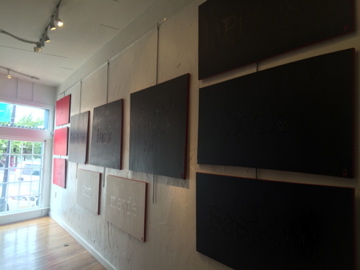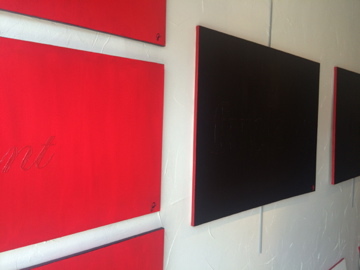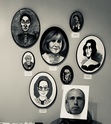Charles Martin's Blog, page 15
July 22, 2015
Review: Harper Lee’s Go Set A Watchman
There are a few people in this life you cannot bear to think about failing morally. Your mother. The Dalai Lama. Your gynecologist. Your neighborhood ice cream truck driver. Atticus Finch.
In the weeks preceding the release of the highly controversial and greatly anticipated second novel by Harper Lee entitled, Go Set a Watchman, troubling news about the plot began to leak out. In the new novel, beloved hero and cultural icon, Atticus Finch, was rumored to have become a racist, a segregationist, and even a member of the Klu Klux Klan.
For two weeks, social media websites were aflame with gossip about the book. If Atticus was revealed to be a racist monster, why should anyone read it? Wouldn’t this new information stain backwards onto the pages of To Kill a Mockingbird, destroying our hero and the great American novel forever?
The passionate reaction of my friends and acquaintances on social media sites was a heartening testament to the power of books—to the knowledge we carry as a society that stories are vital to our understanding of our culture and ourselves. To think that Harper Lee could betray us by besmirching one of our favorite characters was frightening. The gut-level instinct for most was to turn away from such a story. But in Go Set a Watchman, Harper Lee makes a heart-felt and passionate case for why some people choose to keep loving a friend or fallen hero despite their betrayal or moral failure. She makes the same case for people who choose to stay in the place they were born, despite the area’s deeply-entrenched social problems.
While many of my most sensitive and intelligent friends were vowing to never read the book, I stumbled upon a comment by my friend, Justin Fortney, of Guthrie and the band Stranded at the Station:
“I’m especially not worried about the tarnishing of Atticus’ reputation. He’s never felt like a hero who can do no wrong. He’s someone who acted bravely, like good people do, and good people screw stuff up all the damn time. Atticus will be fine.”
As Uncle Finch says to a grown Scout, “You’ve no doubt heard some pretty offensive talk since you’ve been home, but instead of getting on your charger and blindly striking it down, you turned and ran. You said, in effect, ‘I don’t like the way these people do, so I have no time for them.’ You’d better take time for them, honey, otherwise you’ll never grow.” He is telling his strong-willed niece that Maycomb, and Atticus, desperately needs her to live there, and live out her convictions.
Reading the novel, I was reminded of those who choose to live in Oklahoma instead of moving to a state where the President of the United States would not be welcomed by a crowd waving Confederate flags. As her Uncle Finch says to Scout, “It takes a certain kind of maturity to live in the South these days.”
Yes, it does. As we listen with horror to our impoverished citizens called “animals” by a local politician, watch the number of innocent black men murdered by police officers grow, see our LGTB community confronted with hatred in the name of religion, many of us wonder why we still live here. But like Harper Lee, we stay. We stay in the south—not because it is perfect—but because this is our home and our home needs us.
We are the watchmen.
July 16, 2015
Picking at the Corpse of 54 Oklahoma Artists in The Elaborate Collaborate
The Elaborate Collaborate
Opening Reception Friday 7/17
Closing Reception Friday 8/14
IAO Gallery
706 W. Sheridan
https://www.facebook.com/theelaboratecollaborate
Organizing 54 Oklahoma artists to participate in a sprawling multi-media collaboration is already an impressive show of strength, but there is much more to The Elaborate Collaborate. Curated by the tireless arts advocates, Kelsey Karper and Romy Owens, the exhibition opens this Friday as a fresh, conceptual take on the surrealist tradition with a delightfully macabre name, “the exquisite corpse.”
One part party game, two parts art exercise, variations on the exquisite corpse date back to the early twentieth century when artists wanted to know what incredible things would become possible when they were forced to explore far beyond their comfort zones.
Owens and Karper decided on three versions of the game for the Elaborate Collaborate.
“For the paper component, there are 42 artists and each got identical pieces of paper,” Karper said. “We marked each paper to show where one line should begin and another should end so it can lead to the next piece to create a continuous line throughout the panoramic work stretching across the gallery. Each artist did their initial drawings on their own, not knowing what the other artists were doing. We hung them and now the artists are welcome to come into the gallery anytime it is open to work on top of each other’s drawings.”
The Elaborate Collaborate is more than just a creative exercise, but a large-scale showcase of Oklahoma’s rich, diverse, and dense community of professional artists.
“This is a unique opportunity for the public to come in and see the artists at work in the gallery,” Karper said. “Anytime someone comes in, there could be one or more artists here working, which is not an experience you normally get in a gallery setting. If a piece sells, all the artists get an equal cut, so we are all in this together. Hopefully, that will mean that all the artists have an equal investment in the show.”
Michael Litzau and Ginnie Baer are two Guthrie artists participating in the event. Litzau contributed a geometric paper cutting that bumps up against Baer’s more abstract and free linework. Litzau admitted stealing a peek of Baer’s piece since they only work one room away.
“Mine was done before he started his.” Baer said. “I had to leave town so I didn’t know what he was going to do, though I did have a rough idea. I wanted to make a contour line drawing that would allow someone else plenty of space to collaborate on it. That was one of the biggest challenges. How much is too much? How much is not enough? Will people be able to add to it?”
Though most artists focused on illustration for the show, Litzau plans on continuing to do paper cutting as he embellishes on the pieces submitted by other artists. He doesn’t normally collaborate, so he views this as a unique opportunity to improvise amid someone else’s creative vision.
“That is the great thing about this project, I don’t have to feel weird or guilty about it,” Litzau said. “I can just cut out some figures or parts and reassemble then. It takes away my inhibitions about touching other people’s work.”
Since the exquisite corpse extended to other art forms within the surrealist movement, Owens and Karper wanted to bring in other media so a wider array of artists could participate. Kerri Shadid will be hosting a Poetry Game Night on July 30 to play with the game’s literary incarnations. Film also factored heavily into the surrealist movement, so a video component created for the exhibition will be projected throughout the month featuring ten filmmakers and one composer.
“You have ten seconds of what the artist ahead of you did and that is all you have to go on,” said filmmaker Sarah Hearn. “I didn’t have any premeditated ideas of what I was going to do, but let those ten seconds guide where I would go with my minute. I was familiar with the exquisite corpse and approached it as a playful thing. I filmed a lot of footage and edited it together, so it wasn’t just a one minute sequence. I was hoping it would function on its own but also as part of the group.”
All artwork will be finished by the closing on August 14 when the individual pieces will go up for sale. Only $600 each—quite reasonable considering the paintings feature the fingerprints of as many as 42 of Oklahoma’s most exciting visual artists. A snapshot from a time when it was our turn to explore the outer reaches of what was possible in art.


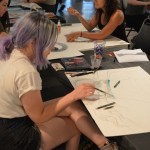
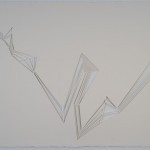
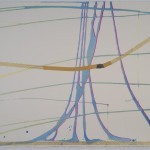
July 13, 2015
The Confederate Flag and Why I Might Be a Hypocrite
Symbology is a tricky thing.
The Confederate flag does not endure because of its ties to slavery or the South’s historic and ongoing issues with race relations. It endures because it represents rebellion and ancestral pride to those that still wave it from their homes and boats or emblazon it on cars/vans/lower backs/beer koozies.
The cultural disconnect emerges from the human instinct to rally around or against symbols. The Confederate Battle Flag harkens back to a war lost long ago, but because the symbol has been co-opted by groups as divergent as the hate-mongering Klu Klux Klan to the harmless and lovable bootleggers, the Dukes of Hazzard, the flag’s meaning has also become confused.
Is it hate? Is it heritage? The answer is it is both. Any honest assessment of the flag’s legacy cannot sever one from the other. As such, it is appropriate to remove the flag from government buildings, but inappropriate to ban it altogether because it is not the only popular symbol that comes loaded with very complicated and distasteful connotations.
While chewing over this controversy, I looked to my own history with symbology to do some spiritual housekeeping. I wanted to find out if I am guilty of the same casual disregard of history.
Turns out I am.
Oklahomans will remember Michael Ivins of The Flaming Lips inspiring a nationwide controversy during a trip to the state capitol. “Do You Realize” was being dubbed the state’s official rock song. He wore a t-shirt bearing the Soviet Hammer and Sickle which, understandably, did not sit well with legislators. The negative reaction from conservatives stemmed from the memory of one of the most vicious regimes in human history. Adolf Hitler’s Nazis where a more pure evil, but Joseph Stalin was responsible for far more deaths and a more sustained brutality.
Yet I found myself among many left-leaning music fans wearing a Hammer and Sickle t-shirt with “Motherfucker” underneath as a protest of our legislators’ temper tantrum over Ivins’ choice of clothing.
But why? Why is the Hammer and Sickle okay, but the Battle Flag is not? My initial reasoning was that I am not a communist nor do I sympathize with the fallen Russian empire. There was no expectation of shared values with the soviet regime.
I wore it because, for a post-modern art piece, it’s hard to beat.
I also have a belt buckle bearing the Rising Sun Japanese flag. I do not condone the staggering war crimes committed by Japanese forces during World War II and understand why those of Chinese or Korean ancestry are touchy with how the image has transformed within American pop culture.
But it really is a sharp-looking belt buckle. UFC superstar Georges St-Pierre apparently shares my fashion sense. He had a gi designed with the Rising Sun motif, but apologized following an open letter from Chan Sung Jung, the Korean Zombie. The featherweight fighter explained to GSP why the symbol was offensive to citizens of Asian nations that fell in the crosshairs of Imperial Japan.
I also once burned a Jerusalem Cross into the hilt of a wooden practice sword when I was in high school because it was beautiful and badass, as any wooden practice sword owned by an awkward teenager should be. Yet, that symbol has a much different impact in the Islamic world because of the horrors of the European Crusades into the Holy Land.
These are examples of me embracing symbols without thinking of the very, very dark shadows they cast across other cultures.
Perhaps a difference that legitimizes the Rising Sun and the Jerusalem Cross is the same that justifies our American flag. They are symbols of ongoing stories. Yes, our nation has done terrible things in the past, but we are getting better. We are a more just and tolerant society now than we were one hundred years ago and, one can hope, we will be an even more just and tolerant society in another hundred years. We continue to make mistakes, but we also continue to make great strides. In that same respect, modern Japan is not the imperialistic force that spread death and misery across the Pacific nor does the Catholic Church continue to spearhead genocidal campaigns across the Middle East.
But the Confederate Battle Flag, Hammer and Sickle, and swastika represent the past. Their stories are closed and one cannot reclaim these symbols while conveniently whitewashing the atrocities committed by those that followed the banner.
But grace should be afforded too because these symbols are remnants of a cultural heritage. Even if that heritage is stained, it is still a part of the family histories of millions of people. It is a hard thing to expect others to abandon their ancestries. It is also unfair to expect others to swallow their fear because we really, really like a belt buckle.
What we need is to just understand that there is a time and place for symbols. As a personal act of free expression, wearing a Confederate Battle Flag patch should be protected if, for no other reason, loyalty to the symbol will only be heightened by the slightest hint of a national ban. But that same flag, which carries the stain of slavery, should not fly over government buildings which are meant to represent all Americans equally. I can not imagine how foreboding it would be to walk into a City Hall as an African-American with the flag of the Confederacy flying from the flagpole.
Literati Presents: Draven 4
An important facet of Literati is promotion of sequential art to storytellers of all ages. We hope to inspire the next batch of amazing creators to elevate comics to its rightful place as a respected art form. This sometimes includes mentorship or events like Let’s Make Comics. The Draven Fried series is part of this mission.
About The Artist: Draven Fried is a nine-year-old pupil of artist Jonathan Hubbell. She has already developed a razor-sharp style, message, and satirical edge all her own. We are proud to publish and encourage her brave aesthetic. Unrelated, Draven once had her eye gouged by a vulture.
July 9, 2015
Let’s Make Comics at District House and in Midwest City
We are going to be back at District House (1755 NW 16th St in OKC) for Live on the Plaza on Friday, July 10 from 6:30-9 pm for Let’s Make Comics featuring Don Rosencrans.
On Saturday morning, we will be at the Midwest City Library (8143 East Reno Avenue) from 1-3:30 as part of their mini-con.
Both of these events are free and all ages.
On August 8, we will be doing our first drink and draw style Let’s Make Comics at Mainline Art Bar (111 N Main St in Tulsa). This event will also be the release party of issue 2 of Natasha Alterici’s Heathen. This will be 21 to enter, but still free.
To find out more info or to check out more info on Let’s Make Comics, visit the OFFICIAL PAGE.
July 6, 2015
Literati Presents: Draven 3
An important facet of Literati is promotion of sequential art to storytellers of all ages. We hope to inspire the next batch of amazing creators to elevate comics to its rightful place as a respected art form. This sometimes includes mentorship or events like Let’s Make Comics. The Draven Fried series is part of this mission.
About The Artist: Draven Fried is a nine-year-old pupil of artist Jonathan Hubbell. She has already developed a razor-sharp style, message, and satirical edge all her own. We are proud to publish and encourage her brave aesthetic. Unrelated, Draven once had her eye gouged by a vulture.
July 3, 2015
Gina Lindley at Bombs Away Art
First Friday in the Paseo Arts District
6-9 pm, July 3
Bombs Away Art
3003A Paseo in Oklahoma City
Gina Lindley’s upcoming show may be the most striking to come to Bombs Away Art and potentially the most divisive, so I’m going to let the artist statement speak for itself:
Observing powerful words from a different view.
This series was made during a challenging time in my life and helped me change negativity into beauty and the hateful into ordinary, neutralizing the bite.
It gave me the power over pain thru creativity.
Harsh expletives as high art. This will be the best use of your Friday night.
June 29, 2015
Literati Presents: Draven 2
An important facet of Literati is promotion of sequential art to storytellers of all ages. We hope to inspire the next batch of amazing creators to elevate comics to its rightful place as a respected art form. This sometimes includes mentorship or events like Let’s Make Comics. The Draven Fried series is part of this mission.
About The Artist: Draven Fried is a nine-year-old pupil of artist Jonathan Hubbell. She has already developed a razor-sharp style, message, and satirical edge all her own. We are proud to publish and encourage her brave aesthetic. Unrelated, Draven once had her eye gouged by a vulture.
June 23, 2015
June 22, 2015
Literati Presents: Draven Fried 1
An important facet of Literati is promotion of sequential art to storytellers of all ages. We hope to inspire the next batch of amazing creators to elevate comics to its rightful place as a respected art form. This sometimes includes mentorship or events like Let’s Make Comics. The Draven Fried series is part of this mission.
About The Artist: Draven Fried is a nine-year-old pupil of artist Jonathan Hubbell. She has already developed a razor-sharp style, message, and satirical edge all her own. We are proud to publish and encourage her brave aesthetic. Unrelated, Draven once had her eye gouged by a vulture.

